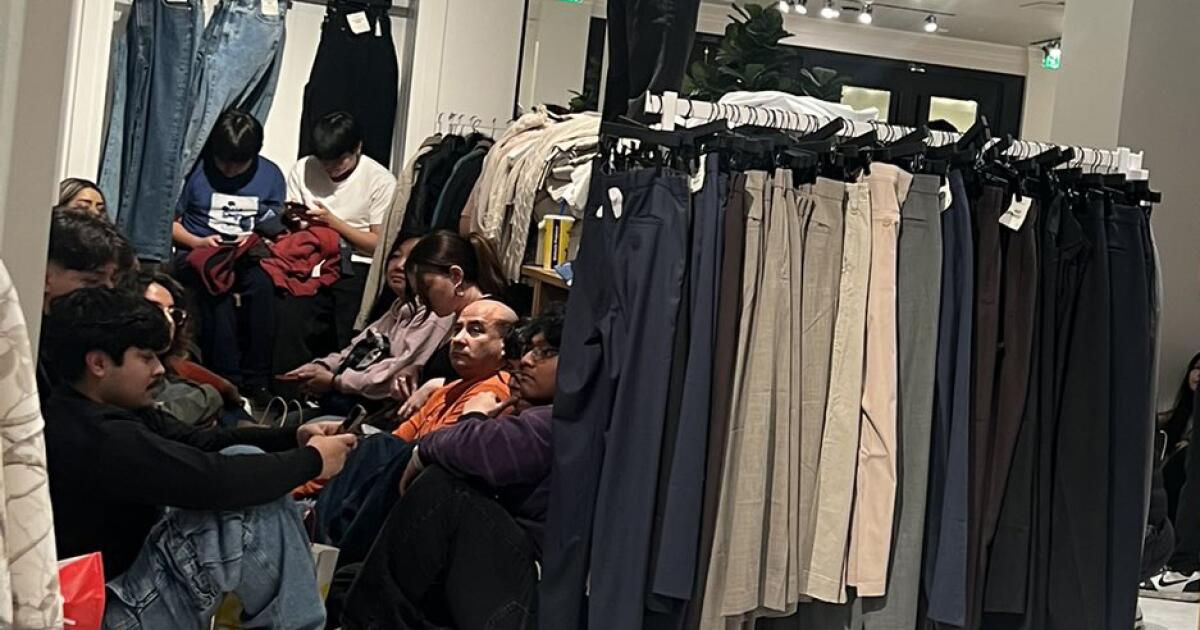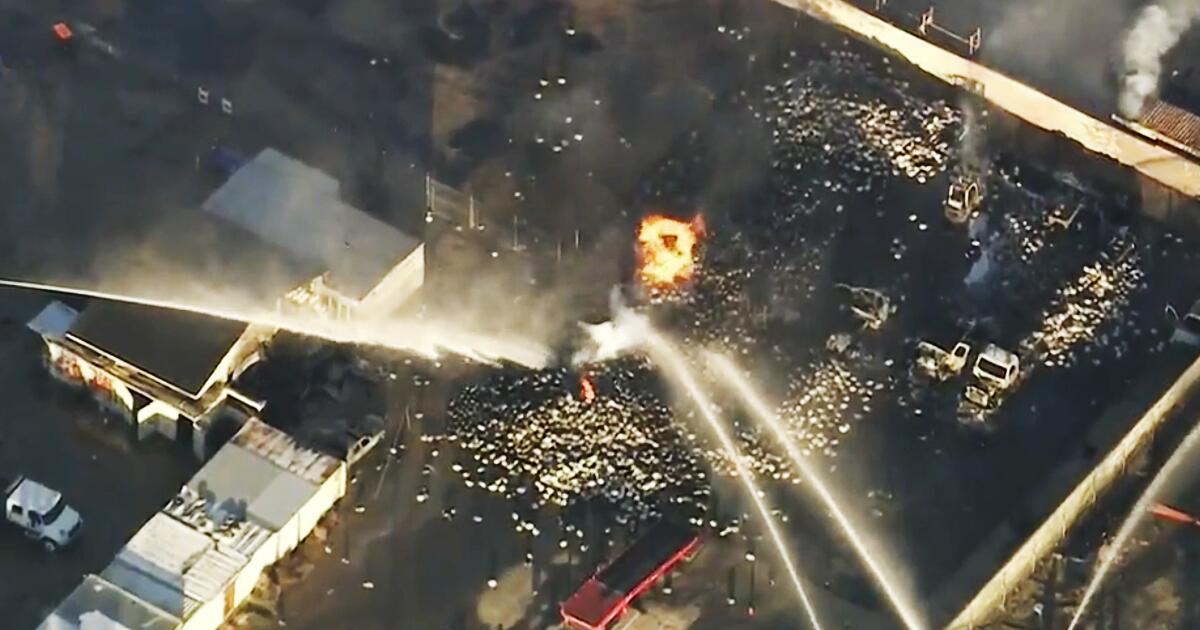Fine art meets street art: the New Museum’s Freeman Lane strategy

Down on the Bowery, the New Museum’s minimalist stacked-box façade stands out as an oddity in an architectural lineup that includes surviving 19th-century buildings like William S. Burroughs’s bunker and the old Bowery Mission. Today, workers are putting the finishing touches on the museum’s $82 million, 60,000-square-foot expansion, which furthers the language of modernism with its angular, faceted form.
On a recent day in the alley behind the museum, DeGruppo, one of New York City’s most prolific graffiti writers, was on tiptoe, putting the final touches on a plywood barrier by marking it with red spray paint. It’s the latest addition to Freeman’s Alley, Lower Manhattan’s graffiti ground zero, which for decades has served as an organic, open-air gallery for a broad cast of outlaw artists whose work rarely found its way into established art institutions.
Soon, a new gateway connecting the streets to the elite will open behind a plywood barrier. When the museum’s expansion is completed this fall, Freeman Lane will serve as the main after-hours entrance to a beautifully appointed new high-end restaurant within the expanded museum. So before indulging in modern American cuisine and botanical cocktails, museum patrons will see the work of some of New York City’s top graffiti artists in a dialogue between two art worlds that historically existed in parallel.
“It’s all coming together,” DeGruppo said. “On the one hand, it’s good for exposure for us artists. People come over, see us painting, see our art — that’s a good thing.” Then, given the forces of commercialism and gentrification that have weighed on the alley for years, he added, “Hey, businesses are going to do what businesses do with the resources they have. But you never know, maybe one day we’ll be in a museum.”


The main entrance to both the museum and its new extension is located off the Bowery Mission between Livington and Stanton Streets on New York’s Lower East Side. Freeman Alley—a dead-end street parallel to the Bowery—ends behind the mission.
In interviews with the Observer, many of the artists who have considered Freeman Lane their turf over the years agreed that the new museum’s restaurant entrance represents opportunity, not encroachment. Weaver, another prolific writer who long curated much of the Freeman Lane wall, embraced the institutional attention: “I think it’s great. Why wouldn’t you want more people to see your work, especially people who are into art because they’re going to museums?” he told the Observer.
His views reflect a pragmatic understanding of property rights that may surprise those who romanticize the outlaw ethos of graffiti culture. “The truth is we don’t own the property. It’s funny because there’s a naive, ignorant philosophy among graffiti writers that the walls are ours. The truth is, nothing is ours.” Having recently purchased his own property, Vivo has a new appreciation for ownership: “I’d be nervous if someone hit the shit out of me.”
Another writer, Zui, who has been taking people around the alley and observing its transformation for years, saw the potential for symbiosis. “In theory, it’s a symbiotic relationship,” Zui told Observer.com. He envisions the new museum’s presence elevating the alley’s status: “If we could somehow accept that the new museum is using the alley because of the art, but adding to the alley’s presence through their presence, that would just make it better for all of us in the street art community.”
In recent years, Freeman Alley has gained enormous popularity among New Yorkers and others eager to experience authentic guerrilla art from the art world’s underground outlaws and displays in the wild. Every inch of the alleyway glistens with layers of chrome and candy-colored spray-paint tags, stencil work, wheat paste creations and thousands of stickers, and has become a coveted backdrop for fashion shoots, music videos and Instagram campaigns. Recently, celebrities have visited: Taylor Swift, Bad Bunny and Dave East, among others.


Jimmy Wright, an artist whose work is in the collections of the Whitney Museum and the Metropolitan Museum of Art, is Freeman’s Lane’s sole resident and unofficial historian. Over the past five years, Wright has watched the alley grow from a hub of drug dealers, addicts and prostitutes to what he says he sees today: “a slick, high-rise affluent Manhattan.”
Changes are made in stages. The first Freemans restaurant opened at the end of the alley 20 years ago. The Untitled Hotel then closed its doors to the Bowery and created a courtyard entrance from the alley, while inviting graffiti artists to decorate the space in an elaborate act of artistic cleansing. Last year, a luxury residential building owned by UNTITLED owners was completed across the alley, accelerating the transformation.
While Wright sees the new restaurant entrance as an inevitable next step in the commodification of the alley, he doesn’t think it will close the gap between the fine art inside the museum and the street art outside.
“These are two different art worlds,” Wright told the Observer, standing in front of his apartment overlooking the alley’s everyday theater. “This is not Keith Haring and Jean-Michel Basquiat in 1978. This is a different art world and these artists are not Jean-Michel Basquiat.”
According to city liquor license documents, the New Museum restaurant will be open from 9 a.m. to 1 a.m., serving patrons “modern American” cuisine. While the museum lobby is open during the day, Freeman Alley becomes the only entrance after hours – presumably when the museum closes after 6 p.m.
In an unusual move for an organization dedicated to treating alcoholics and drug addicts, Mission President and CEO James Winans wrote a letter of full support for the restaurant’s liquor license application. “I imagine Bowery Church’s endorsement of a liquor license may come as a surprise to the Board,” Winans wrote in a letter to Community Board 3. “The Church has a long history of helping New Yorkers overcome alcoholism and other addictive behaviors. Therefore, we would not normally write to you in support of a new liquor license.”
In order to locate the restaurant entrance in the alley, the museum had to come to an agreement to gain access through the mission’s backyard. Financial details remain confidential, although there are rumors that the mission received $1 million for the effort. It’s clear that the restaurant’s strategic benefit: In addition to giving patrons a glimpse of illegal art, it also allows them to avoid directly encountering the homeless people who line up outside the Bowery Church entrance every day waiting for a meal.


The restaurant itself is filled with art, but it’s nothing like the raw artistic energy outside the back door. Chef Julia Sherman will create “artistic and visually striking” dishes with “bright colors and interesting eats”, while artist Ian Cheng’s installation will be the highlight of the bar area and designer Minjae Kim will provide bespoke furniture. The wine list emphasizes natural options from regenerative growers for the conscious consumer.
Yet the gap between the indoor and outdoor art worlds remains vast. None of the artists who work in Freeman Lane are likely to be regulars in the museum’s new restaurant, where martinis and Sprites are served while Graf writers continue to work out in the back. When asked about this cultural intersection, the New Museum’s director of communications, Sarah Morris, gave a measured response, noting that the institution is “excited about the new museum’s expansion as a continuation of its history of dialogue with the surrounding arts community, including the Freeman Lane staff.”
The museum’s outdoor program focuses on new public plazas at Bowery and Prince Streets, rather than Freeman Lane. A sculpture by Sarah Lucas will inaugurate the plaza, which will be securely within the boundaries of the institution, while the alleys will remain unregulated free movement zones for now.
Prior to the Freeman Lane access plan, perhaps the New Museum’s most significant engagement with street art occurred in 2022, when an artist named Acer scaled the Bowery’s five-story facade, leaving a monumental tag three stories high. It was one of the boldest pieces of graffiti in lower Manhattan, but the museum wiped it clean within 48 hours.
The museum says it remains “deeply rooted in the Bowery community,” but not everyone is convinced the restaurant doors and continued development of one of the city’s few true street art destinations is a boon to the alley. Optimo, another artist and alley regular, saw the writing on the wall: “Freeman’s Alley has been exposed; it’s time for a change. People need to spread out and not just rely on one alley to get their art seen,” he told the Observer.
Optimo’s words capture a fundamental tension: as Freeman Lane becomes increasingly institutionalized, its value as a genuine street art space may diminish. In this sense, the entrance to the new museum represents both recognition and choice.
The plywood panels on the doors that connect the graffiti-covered alleys to the museum’s elaborate corridors will soon disappear, and with them de Grupo’s work. Whether Freeman Lane becomes the site of some kind of dialogue between the art world, or is just another example of cultural appropriation, may depend on how both sides respond to this unprecedented arrangement. For now at least, both countries appear to benefit from proximity.




